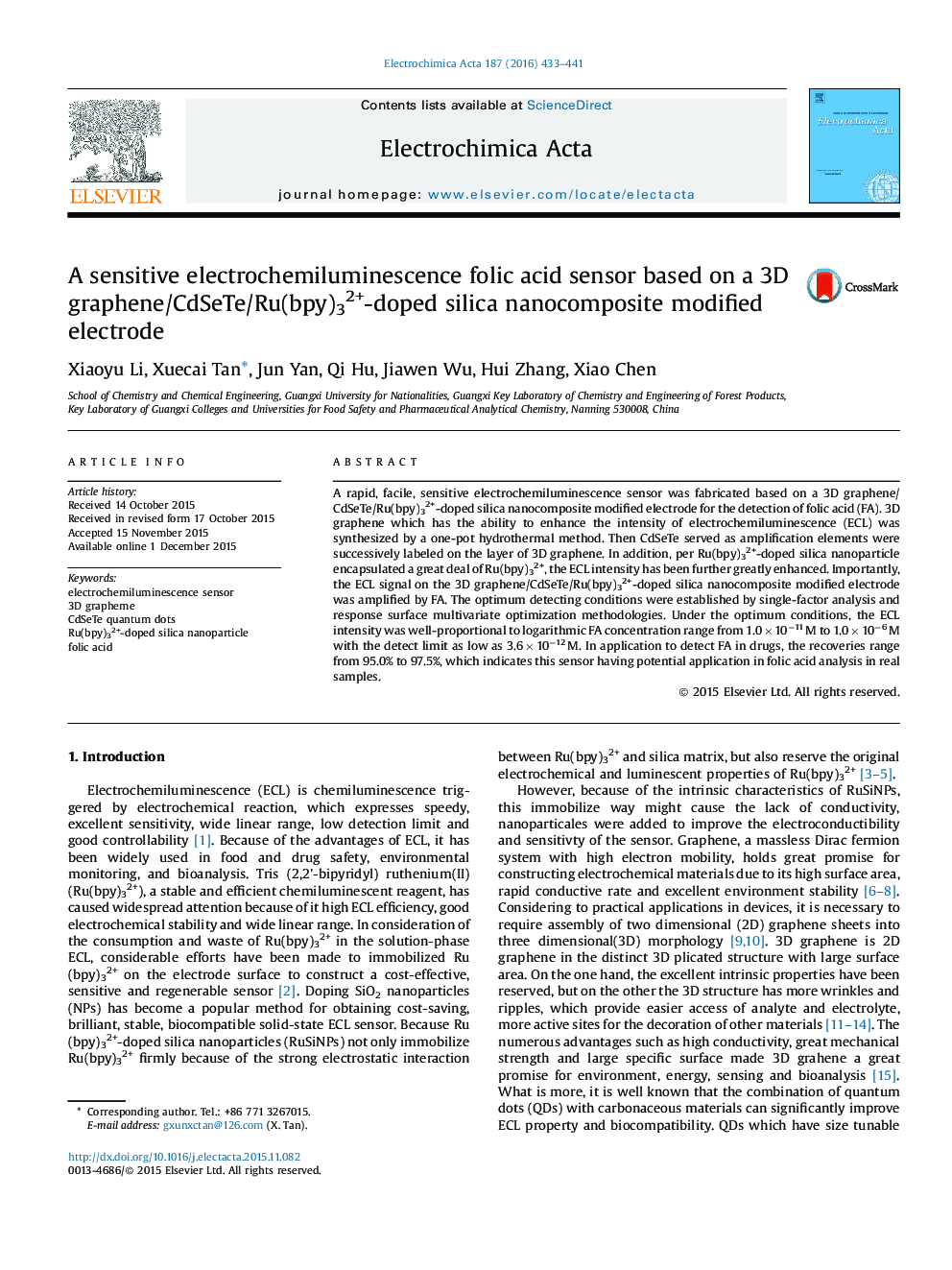| Article ID | Journal | Published Year | Pages | File Type |
|---|---|---|---|---|
| 183288 | Electrochimica Acta | 2016 | 9 Pages |
•A solid-state ECL folic acid sensor was built based on Ru(bpy)32+-doped silica nanoparticle.•The combined action of 3D graphene and CdSeTe QDs amplify the ECL signal.•The sensor exhibits an ultralow detection limit (3.6 × 10−12 M) and wide linear range.
A rapid, facile, sensitive electrochemiluminescence sensor was fabricated based on a 3D graphene/CdSeTe/Ru(bpy)32+-doped silica nanocomposite modified electrode for the detection of folic acid (FA). 3D graphene which has the ability to enhance the intensity of electrochemiluminescence (ECL) was synthesized by a one-pot hydrothermal method. Then CdSeTe served as amplification elements were successively labeled on the layer of 3D graphene. In addition, per Ru(bpy)32+-doped silica nanoparticle encapsulated a great deal of Ru(bpy)32+, the ECL intensity has been further greatly enhanced. Importantly, the ECL signal on the 3D graphene/CdSeTe/Ru(bpy)32+-doped silica nanocomposite modified electrode was amplified by FA. The optimum detecting conditions were established by single-factor analysis and response surface multivariate optimization methodologies. Under the optimum conditions, the ECL intensity was well-proportional to logarithmic FA concentration range from 1.0 × 10−11 M to 1.0 × 10−6 M with the detect limit as low as 3.6 × 10−12 M. In application to detect FA in drugs, the recoveries range from 95.0% to 97.5%, which indicates this sensor having potential application in folic acid analysis in real samples.
Graphical abstractFigure optionsDownload full-size imageDownload as PowerPoint slide
